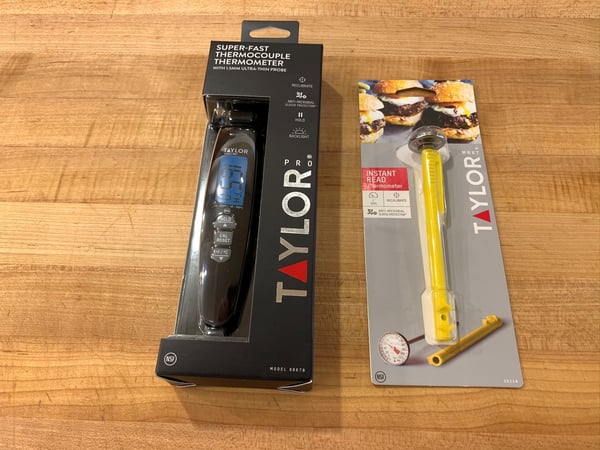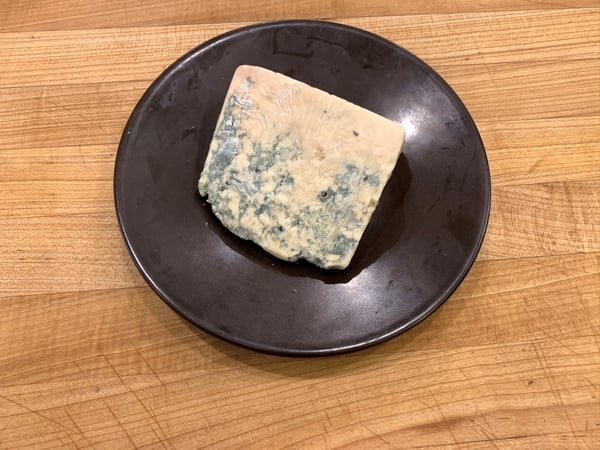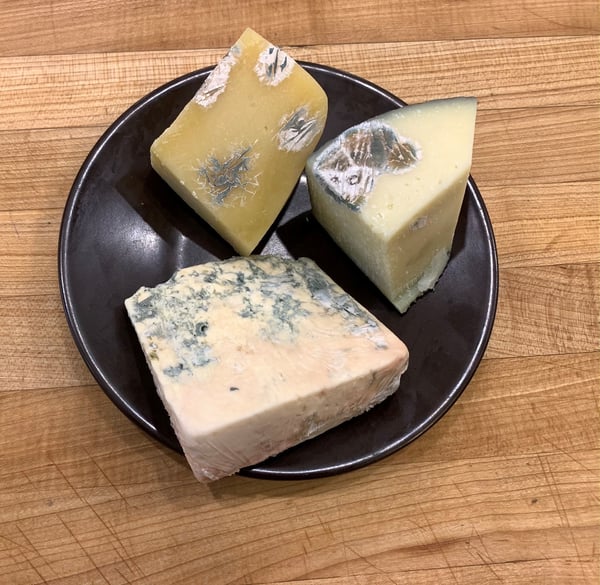Let's talk about food safety. I’m sure many of you are already aware of how to keep food safe in the refrigerator. But, how do I know if my fridge is even cold enough? There are many models out there, some high-tech with all the bells and whistles. But the best way to be sure your fridge is keeping the proper temp is to place a thermometer in the warmest part of your fridge, by the front. Your thermometer should always read 40º F. This is your safe zone and your food should be safe to eat if stored at that temperature.
Having a clean and well organized fridge is ideal. While we want to reduce food waste, we should toss anything that is starting to turn bad. You probably have a lot more questions around this topic, such as how do I know how long to keep my cooked food in the fridge? What about mold on cheese? How do I defrost my frozen goods properly?
Here are some answers to the most common questions I hear from students.
Leftover Food
The main cause of food poisoning is leftover food. Many of us leave it out of the fridge far too long or consume it without properly heating it. Cooked foods, leftovers so to speak, should be kept in the fridge and consumed within three days. Make sure to reheat to an internal temperature of 165ºF, and yes, you can use your microwave!
I highly recommend investing in a good thermometer. A thermometer gives you control because you can check for proper internal temperatures, which indicate doneness, when you cook chicken, steak and fish.

Mold on Cheese
Mold on some cheeses actually contribute to their flavor and are perfectly okay to eat. Danish Blue, Gorgonzola and Stilton are blue cheeses that are made with cultures of mold which give it spots or veins of the mold throughout the cheese. The mold can vary in color through various shades of blue and green.

Brie and Camembert are soft cow's-milk cheeses that are pale in color with a slight grayish tinge under a rind of white mold. But don't worry, it's fine to eat the rind.
With some hard cheeses such as Parmesan, it's fine to cut off the mold before eating the cheese. But mold on soft cheeses such as cottage cheese, ricotta cheese, cream cheese, and also sliced, crumbled or shredded cheeses could make you very sick. A good rule to follow is: when in doubt, throw it out!

Bread
Once bread starts to mold it’s basically turning into penicillin, just throw it out! I keep my bread in the fridge for about three days. You could also freeze it if you want to keep it longer.
Defrosting
You may remember Thanksgiving morning and your grandmother defrosting a whole turkey on the kitchen counter. Let's make sure we are not doing that! Frozen meat should be defrosted for a whole day inside the fridge.
When you do forget to defrost small amounts of beef, poultry, or shrimp (and who hasn't?), the safe way to quickly defrost is to place the sealed container in a bowl in the sink and run cold water over it. It’s very important to use cold water, never use hot water as the contrast of the cold food and the hot water would create ideal conditions for bacteria to grow. Cold tap water is about 40ºF, about the same temperature as inside your fridge. Also, never rinse raw meat, especially poultry in the sink!
Refrigerator Guidelines
- Store raw and cooked food separately.
- Remove wrapping from raw meat and store in suitable clean containers.
- Store raw meat below cooked foods.
- Do not store foods in open tins or cardboard boxes.
- Do not store hot foods in refrigerator. Allow to cool down first.
- Arrange food to allow for circulation of air.
- Check out the sell by date and make sure the food is current.
Temperatures of properly cooked foods
- Beef at 145 F
- Fish at 145 F
- Ground beef at 160 F
- Egg dishes at 160 F
- Poultry at 165 F
I hope that you find this guide helpful and if you learned something new, great! All chefs who work in restaurants, hotels, and our instructors at The Chopping Block are food safety certified and very familiar with these guidelines.
If you have more questions, the best way to learn is to attend our fun in-person or virtual cooking classes and ask our chefs questions. If you are in need of a thermometer or any other tools, look at the options under SHOP in the top navigation bar of our website. We are offering curbside pick up on Tuesdays and Thursdays at Lincoln Square.


